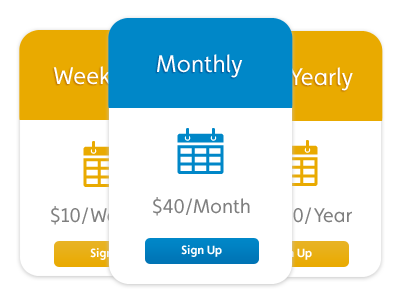
HP’s Instant Ink service offers some lessons for companies exploring what the IoT might mean for their business models. The key benefits which HP is getting from Instant Ink are:
• Direct relationships with customers, bypassing retailers and getting customer names, addresses and billing details;
• Monthly recurring revenue streams allowing more predictable and stable income;
• Usage data allowing better inventory planning and optimization of pricing packages;
• Ability to sell other products and services from the direct customer relationship.
HP seems to be taking lessons from the mobile, video streaming and gym/personal fitness sectors in terms of offering tiered monthly packages for its ink service, allowing usage rollovers and optimizing the pricing model to balance its costs across users who print a lot and those who print very rarely. Just like gym memberships, those who use the facilities every day are subsidized by those who joined in January and stopped attending in February but continue to pay their monthly subscriptions. In the case of Instant Ink, users who print a lot of colour pages benefit at the expense of those who print a few pages of black text.
In the same way that Dollar Shave Club brought the razor and blade business model into the 21st century, HP is attempting to bypass intermediaries by selling directly to owners of its printers. Knowing the names, addresses and billing details of its users is a massive step forward for the company and offers opportunities for upselling and the marketing of associated products. However, looking at some online discussions by users of Instant Ink reveals some possible manipulation of the alleged benefits of the service. HP outlines the cost savings offered by Instant Ink but as several users have pointed out, the ink cartridges sent out to customers are larger than those available in the shops, making cost comparisons rather tricky. It seems retailers are not able to sell ink cartridges with the same capacity as those sent out via Instant Ink. HP may wish to comment on that.
Whatever the merits of these complaints, it seems HP is fully committed to developing Instant Ink as a core part of its business strategy. This is not surprising, given the profitability of its printer division compared to its PC business. In quarter 1 of financial year 2017, HP generated $8.2 billion of sales from its PCs (laptops, PCs, workstations) and $313 million of operating profit – a margin of 3.8%. Its printer business, however, had sales of $4.5 billion but generated a profit of $716 million – a margin of 16%. Of that $4.5 billion in printer sales, two thirds came from ink and the profit margins on that would be considerably higher than 16%. According to the company’s annual 10K report for 2016, printer revenues were significantly down due to a number of factors including lower unit sales. This places increased pressure on HP to improve its margins as sales of printers fall and new ways of improving profitability have to be found. However, the new, more profitable business and revenue models need to also offer benefits to end users, a lesson many companies experimenting with the IoT are finding out. As a recent Harvard Business Review article noted:
Getting customers to agree to have their products monitored, which in turn means giving them something of value in return. To get value from the IoT, you have to give value first. Or as Intel Corp.’s vice president and GM of its $2 billion IoT business Jonathan Ballon says: “The benefit has to be to customers. There has to be a value exchange,” he told us. This is especially the case when a company’s wireless sensors are transmitting sensitive customer data such as medical conditions. HP Inc., the part of the old Hewlett-Packard that makes printers, printing ink, PCs, and other digital devices, has found the same thing in its HP Instant Ink initiative. HP outfitted its printers in 2013 with wireless sensors that monitor ink levels and automatically trigger reorders before customers run out. So HP dangled cost savings of up to 50% and reduced headaches for customers (i.e., running out of ink), and it enticed many customers. The CIO of HP Inc., Naresh Shanker, told us: “There has to be customer value – cost savings, very high-quality ink, a great customer experience – all of that.”
Whether all HP’s Instant Ink customers would agree with this is debatable. A recent article on the Trusted Reviews website noted:
To avoid too many deliveries, HP Instant Ink uses huge cartridges with much greater ink reserves than standard ones. HP couldn’t tell us the exact capacity, but it calls them “XXL” cartridges.
Another benefit is that there’s no 12-month contract – you can leave Instant Ink whenever you like. However, the cartridges are clever enough to know whether you’re signed up or not and you won’t be able to print using an Instant Ink cartridge once your membership term has expired.
The issue of special sized cartridges used in Instant Ink was noted by a commenter, Charlie, on the UK’s Which website:
I have the 50 page plan. I’m fine with this service but what irks me is that HP made a special high capacity cartridge for users of this plan so they last longer. This shows how they build in checks to make us buy more cartridges, like shipping printers with a few cc’s of ink and selling cartridges with a few cc’s more but with this plan they are responsible for replacing cartridges so they load them up with ink so they last a very long time. It’s the special capacity cartridges not for sale to the public that make this plan work for both us and HP.
However, as noted earlier in this post, the benefits of Instant Ink to users will depend on their printing habits. According to a PC Adviser review of the service:
The real crown in HP’s hat though is that those 50 pages can be anything at all. If you want to knock out 40 A4 glossy colour photographs, they count just the same as a single text page. Conversely those last pages of documents that only have a line or so at the top of the page actually become more costly under this scheme. As we said, it’s all down to how you use it.
So what lessons does HP’s Instant Ink have for established companies developing IoT business models? I suppose the key one is that the benefits for customers need to be clear and transparent. As more companies switch to subscription models it will become ever more important for users to be able to justify the growing number of monthly debits from their bank accounts. When domestic budgets are squeezed, hard decisions will be made as to which subscriptions to cancel; Netflix, Spotify, cable/satellite television or HP Instant Ink? HP is pinning its hopes that Instant Ink won’t be the first subscription to be cancelled. A recent job advertisement for a Manager of Instant Ink Business Intelligence stated:
This position is in support of HP Instant Ink, a worldwide ink subscription initiative lead out of HP’s Imaging, Printing & Solutions Global Business Unit. HP Instant Ink represents one of the top strategic priorities for the IPS business thus a critical success factor to generating future revenue growth for HP. As the market share and financial leader in the global inkjet market, HP’s inkjet business was built on the highly successful “razor and blade” business model. HP Instant Ink represents a new subscription based business model that is designed to transform the global inkjet market by radically changing the perceived value of HP ink. This is high visibility initiative that has been reviewed at the highest levels in the company.

Martin De Saulles
Editor, Information Matters
Dr Martin De Saulles is a writer, analyst and lecturer specializing in the commercial applications of data.
